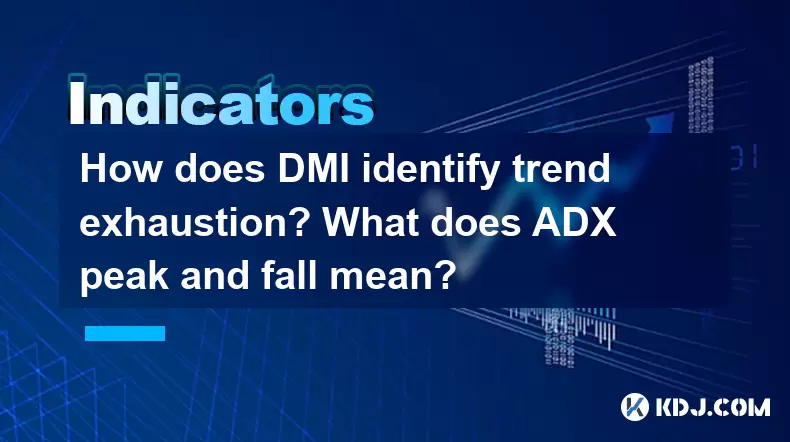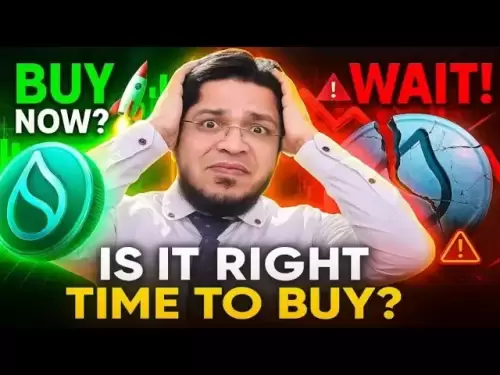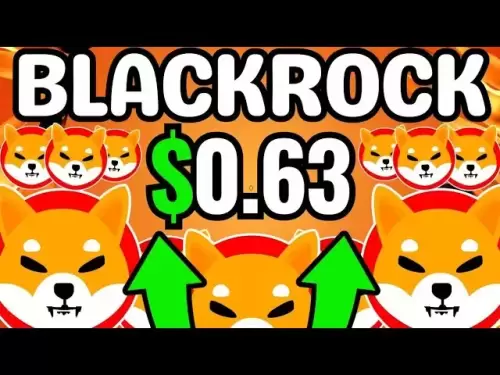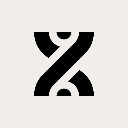-
 Bitcoin
Bitcoin $117900
-0.22% -
 Ethereum
Ethereum $3620
1.45% -
 XRP
XRP $3.392
-1.67% -
 Tether USDt
Tether USDt $1.001
-0.01% -
 BNB
BNB $741.5
1.66% -
 Solana
Solana $177.7
0.35% -
 USDC
USDC $0.9999
0.00% -
 Dogecoin
Dogecoin $0.2524
4.26% -
 TRON
TRON $0.3190
-1.74% -
 Cardano
Cardano $0.8331
1.49% -
 Hyperliquid
Hyperliquid $44.73
-0.94% -
 Stellar
Stellar $0.4609
-0.52% -
 Sui
Sui $3.844
2.54% -
 Chainlink
Chainlink $18.54
2.73% -
 Hedera
Hedera $0.2685
2.60% -
 Bitcoin Cash
Bitcoin Cash $522.6
1.91% -
 Avalanche
Avalanche $24.57
4.49% -
 Shiba Inu
Shiba Inu $0.00001508
2.57% -
 Litecoin
Litecoin $111.2
9.56% -
 UNUS SED LEO
UNUS SED LEO $8.989
0.15% -
 Toncoin
Toncoin $3.185
-0.08% -
 Polkadot
Polkadot $4.391
3.82% -
 Uniswap
Uniswap $10.34
3.56% -
 Monero
Monero $327.3
1.09% -
 Ethena USDe
Ethena USDe $1.001
-0.02% -
 Bitget Token
Bitget Token $4.953
1.19% -
 Pepe
Pepe $0.00001351
2.67% -
 Dai
Dai $1.000
0.01% -
 Aave
Aave $320.9
0.41% -
 Bittensor
Bittensor $415.9
1.00%
How does DMI identify trend exhaustion? What does ADX peak and fall mean?
DMI, with +DI, -DI, and ADX, helps identify trend exhaustion in crypto trading; ADX peaks signal weakening trends, while falls suggest potential reversals.
May 23, 2025 at 04:21 am

Introduction to DMI and ADX
The Directional Movement Index (DMI) is a technical indicator developed by J. Welles Wilder to assess the strength of a price trend and identify potential trend exhaustion. It consists of three main components: the Positive Directional Indicator (+DI), the Negative Directional Indicator (-DI), and the Average Directional Index (ADX). The ADX is particularly crucial as it measures the strength of the trend, regardless of its direction. In this article, we will delve into how the DMI identifies trend exhaustion and what the peaks and falls of the ADX signify in the context of cryptocurrency trading.
Understanding DMI Components
The +DI measures the upward movement in price, while the -DI measures the downward movement. These indicators are calculated based on the difference between the current high and the previous high, and the current low and the previous low, respectively. When the +DI is above the -DI, it indicates a bullish trend, and when the -DI is above the +DI, it indicates a bearish trend.
The ADX, on the other hand, is derived from the smoothed averages of the difference between +DI and -DI. It ranges from 0 to 100, with readings above 25 typically indicating a strong trend. The ADX does not indicate the direction of the trend but rather its strength. A rising ADX suggests that the trend is gaining strength, while a falling ADX suggests that the trend is weakening.
Identifying Trend Exhaustion with DMI
Trend exhaustion occurs when a price trend loses its momentum and is likely to reverse. The DMI can help traders identify this point through specific signals.
One key signal is the crossover of +DI and -DI. When the +DI crosses above the -DI, it suggests that the bullish trend is gaining strength, and when the -DI crosses above the +DI, it suggests that the bearish trend is gaining strength. However, if these crossovers occur frequently and rapidly, it may indicate that the trend is losing momentum and nearing exhaustion.
Another important signal is the divergence between the price and the DMI lines. If the price continues to make new highs or lows, but the +DI and -DI lines fail to follow suit, it suggests that the trend is weakening and may be approaching exhaustion. For instance, if the price is making higher highs, but the +DI is not, it indicates that the bullish momentum is fading.
The Role of ADX in Trend Analysis
The ADX plays a critical role in confirming the strength of the trend identified by the +DI and -DI. A high ADX value, typically above 25, confirms that the trend is strong and likely to continue. Conversely, a low ADX value, typically below 20, suggests that the market is in a range-bound or choppy state, with no clear trend.
A rising ADX indicates that the trend is gaining strength. This can be a signal for traders to enter or hold their positions in the direction of the trend. For example, if the +DI is above the -DI and the ADX is rising, it confirms a strong bullish trend. Conversely, if the -DI is above the +DI and the ADX is rising, it confirms a strong bearish trend.
ADX Peaks and Falls: What They Mean
ADX peaks occur when the ADX reaches its highest point within a given period. A peak in the ADX suggests that the trend has reached its maximum strength and may be about to weaken. This is a crucial signal for traders to be cautious, as the trend may be nearing exhaustion.
ADX falls occur when the ADX begins to decline from its peak. A falling ADX indicates that the trend is losing strength and may be approaching exhaustion. Traders should be alert to potential trend reversals when the ADX starts to fall, especially if it falls below 25.
It is important to note that a falling ADX does not necessarily mean the trend will reverse immediately. It simply indicates that the trend is weakening. The actual reversal may occur when the +DI and -DI lines cross over, or when there is a significant divergence between the price and the DMI lines.
Practical Application in Cryptocurrency Trading
In the context of cryptocurrency trading, the DMI and ADX can be powerful tools for identifying trend exhaustion and making informed trading decisions. Here is a practical example of how to apply these indicators:
- Identify the trend direction: Use the +DI and -DI lines to determine whether the market is in a bullish or bearish trend. If the +DI is above the -DI, the trend is bullish; if the -DI is above the +DI, the trend is bearish.
- Confirm the trend strength: Use the ADX to confirm the strength of the trend. If the ADX is above 25, the trend is strong; if it is below 20, the market is likely range-bound.
- Monitor for trend exhaustion: Watch for signs of trend exhaustion, such as frequent crossovers between the +DI and -DI lines, or divergences between the price and the DMI lines.
- React to ADX peaks and falls: Be cautious when the ADX reaches a peak, as it may indicate that the trend is about to weaken. If the ADX begins to fall, especially below 25, prepare for potential trend reversals.
Frequently Asked Questions
Q: Can the DMI be used as a standalone indicator for trading decisions?
A: While the DMI is a powerful tool for identifying trends and trend exhaustion, it is often best used in conjunction with other indicators and analysis methods. Combining the DMI with other technical indicators, such as moving averages or the Relative Strength Index (RSI), can provide a more comprehensive view of the market and help confirm trading signals.
Q: How frequently should I check the DMI and ADX for accurate trading?
A: The frequency of checking the DMI and ADX depends on your trading style and timeframe. For short-term traders, checking the indicators on an hourly or even 15-minute chart may be necessary. For longer-term traders, daily or weekly charts may be more appropriate. It is important to align the indicator settings with your trading timeframe to ensure accurate signals.
Q: Is the ADX more reliable in certain market conditions?
A: The ADX is generally more reliable in trending markets, where it can accurately measure the strength of the trend. In range-bound or choppy markets, the ADX may remain low, indicating a lack of clear trend. In such conditions, other indicators that focus on volatility or momentum, such as the Bollinger Bands or the RSI, may be more useful.
Disclaimer:info@kdj.com
The information provided is not trading advice. kdj.com does not assume any responsibility for any investments made based on the information provided in this article. Cryptocurrencies are highly volatile and it is highly recommended that you invest with caution after thorough research!
If you believe that the content used on this website infringes your copyright, please contact us immediately (info@kdj.com) and we will delete it promptly.
- Crypto, Altcoins, and Genius Clarity: Decoding the 2025 Bull Run
- 2025-07-20 10:50:12
- DOGE's Double Bottom: Is a $0.42 Target Really in Sight?
- 2025-07-20 10:30:12
- Cryptos Surge: Decoding Market Gains & Top Performing Assets
- 2025-07-20 10:30:12
- Shiba Inu, Market Cap, and Troller Cat: A Meme Coin Mashup for the Ages
- 2025-07-20 10:50:12
- Bitcoin Wallets, Profitability, and BTC Price: What's the Hype?
- 2025-07-20 10:55:12
- Troller Cat's Stage 14: Balloon Boy Hoax, Contributions Soar!
- 2025-07-20 10:55:12
Related knowledge

Advanced RSI strategies for crypto
Jul 13,2025 at 11:01am
Understanding the Basics of RSI in Cryptocurrency TradingThe Relative Strength Index (RSI) is a momentum oscillator used to measure the speed and chan...

Crypto RSI for day trading
Jul 12,2025 at 11:14am
Understanding RSI in the Context of Cryptocurrency TradingThe Relative Strength Index (RSI) is a momentum oscillator used to measure the speed and cha...

Crypto RSI for scalping
Jul 12,2025 at 11:00pm
Understanding RSI in the Context of Crypto TradingThe Relative Strength Index (RSI) is a momentum oscillator widely used by traders to measure the spe...

What does an RSI of 30 mean in crypto
Jul 15,2025 at 07:07pm
Understanding RSI in Cryptocurrency TradingRelative Strength Index (RSI) is a momentum oscillator widely used in cryptocurrency trading to measure the...

What does an RSI of 70 mean in crypto
Jul 13,2025 at 06:07pm
Understanding the RSI Indicator in Cryptocurrency TradingThe Relative Strength Index (RSI) is a widely used technical analysis tool that helps traders...

Does RSI work in a bear market for crypto
Jul 16,2025 at 01:36pm
Understanding RSI in Cryptocurrency TradingThe Relative Strength Index (RSI) is a momentum oscillator used by traders to measure the speed and change ...

Advanced RSI strategies for crypto
Jul 13,2025 at 11:01am
Understanding the Basics of RSI in Cryptocurrency TradingThe Relative Strength Index (RSI) is a momentum oscillator used to measure the speed and chan...

Crypto RSI for day trading
Jul 12,2025 at 11:14am
Understanding RSI in the Context of Cryptocurrency TradingThe Relative Strength Index (RSI) is a momentum oscillator used to measure the speed and cha...

Crypto RSI for scalping
Jul 12,2025 at 11:00pm
Understanding RSI in the Context of Crypto TradingThe Relative Strength Index (RSI) is a momentum oscillator widely used by traders to measure the spe...

What does an RSI of 30 mean in crypto
Jul 15,2025 at 07:07pm
Understanding RSI in Cryptocurrency TradingRelative Strength Index (RSI) is a momentum oscillator widely used in cryptocurrency trading to measure the...

What does an RSI of 70 mean in crypto
Jul 13,2025 at 06:07pm
Understanding the RSI Indicator in Cryptocurrency TradingThe Relative Strength Index (RSI) is a widely used technical analysis tool that helps traders...

Does RSI work in a bear market for crypto
Jul 16,2025 at 01:36pm
Understanding RSI in Cryptocurrency TradingThe Relative Strength Index (RSI) is a momentum oscillator used by traders to measure the speed and change ...
See all articles

























































































